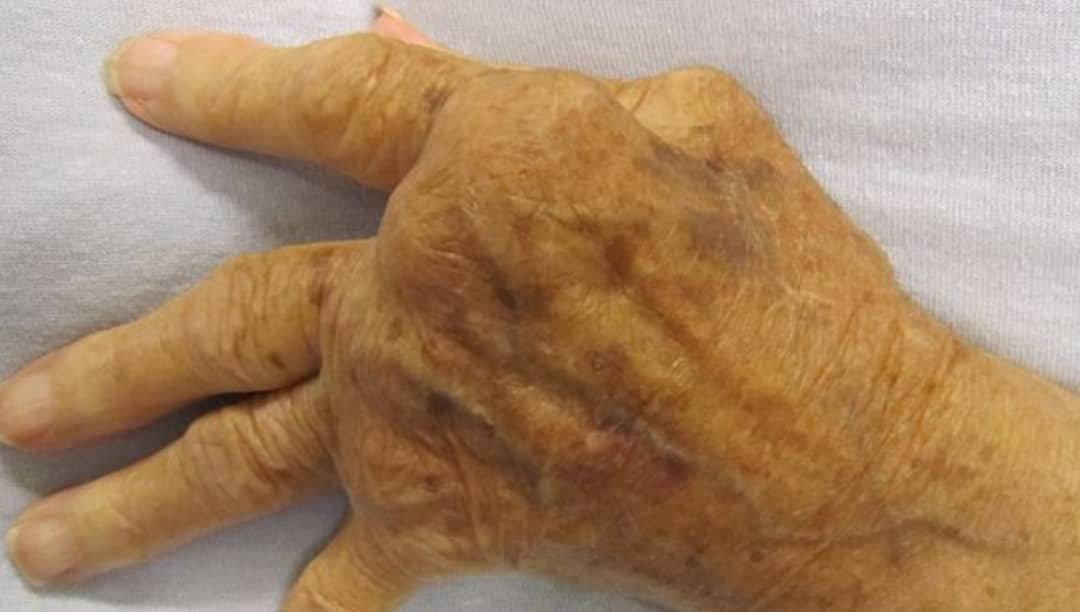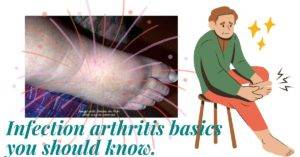
Table of Contents
Autoimmune diseases describe situations when your body’s immune system starts attacking healthy cells in your body causing systemic inflammation and malaise. Autoimmune disease arthritis results when this system extends its misplaced attack to your joints leading to joint inflammation and eventual damage.
Autoimmune disease with or without its associated arthritis is a major cause of disability and death in the US. Arthritis in general collectively accounts for hundreds of billions of dollars annually in costs of treatment and lost income in the US and it has been projected by 2040 about 78 million US adults will be living with medically confirmed arthritis according to the Centers for Disease Control and Prevention (CDC).
Arthritis associated with autoimmune diseases is only second to osteoarthritis in prevalence but is known to have more severe symptoms than osteo, attack more joints, and can be fatal.
Autoimmune disease arthritis types.
Autoimmune arthritis is of different types with the commonest being Rheumatoid. Some of the common ones are:
Rheumatoid arthritis.
Like all other autoimmune disorders, it is characterized by systemic inflammation but affects 2 to 3 times more women than men. On the joints, it starts with an attack on the synovium causing swelling, stiffness, and pain among other early symptoms.
A Study has shown it affects about 1.3% of adults in the US with an incidence rate that’s second only to osteoarthritis as published in the National Library of Medicine.1 About 35% of those affected with the disease suffer some form of work disability.
Research published in PubMed Central has shown the disease is more prevalent among people of low-income brackets and non-Hispanic African Americans while achieving a higher educational level is a criterion for a lowered risk.2 It looks like rheumatoid arthritis is a respecter of educational qualification.
Palindromic rheumatism.
Palindromic is derived from the Greek word Palindromos which means to run back again. This is a rare type of autoimmune disease arthritis with similar symptoms to Rheumatoid. The main difference is that Palindromic arthritis symptoms come and disappear after a couple of days or months with no obvious damage to the affected joints as published in the National Center for Advancing Translational Sciences.
Another point of difference is that, unlike RA which affects women more than men, palindromic arthritis doesn’t discriminate between the sexes as it seems to understand the language of gender equality. However, some of the sufferers may later develop autoimmune diseases like rheumatoid arthritis or lupus.
There is some evidence that suggests palindromic arthritis should rather be taken to be a feature of rheumatoid arthritis than a separate disease but not everyone agrees with this as we’ll see soon.
Spondyloarthritis.
This is a collective term representing a group of interrelated autoimmune diseases with similar symptoms, especially enthesitis as published in PubMed Central.3 Enthesitis is caused by an overactive immune system that attacks the points of insertion of ligaments and tendons into bones causing inflammation of the area. In this class of arthritis are conditions like Psoriatic, enteropathic, and reactive arthritis as covered in our previous article on the subject.
Do sign up for our newsletter to keep in touch:
Juvenile idiopathic arthritis.
This is a major form of arthritis affecting children below the age of 16. It begins with a malfunctioning immune system leading to body-wide inflammation and discomfort just like any other autoimmune disease.
However, unlike the autoimmune disease arthritis that’s clinically chronic, idiopathic juvenile arthritis may go away within months or years. When it goes away it does so permanently and there will be no need for continued treatment but there are cases where it becomes a lifetime ailment.
Juvenile idiopathic arthritis has different subtypes, most affecting girls more than boys, just as in rheumatoid arthritis. The types that present with enthesitis are known to affect boys more than girls, however, there is a systemic idiopathic juvenile arthritis that affects both sexes equally and features fever and rash as published by the National Institute of Arthritis and Musculoskeletal and Skin Diseases.
Autoimmune disease arthritis in the spine.
Osteoarthritis is a common cause of arthritis in the back but it results from a wear and tear process rather than an autoimmune disease. Rheumatoid arthritis and a group of related conditions called spondyloarthritis are the major autoimmune-mediated arthritis that could affect the spine though mostly occur or start from little joints like the fingers. Spondyloarthritis that affect the spine include psoriatic, reactive, and enteropathic arthritis.
Rheumatoid arthritis: Rheumatoid arthritis seldom affects the spine but when it does it usually targets the upper cervical spine than the lower back.
Psoriatic arthritis: It’s only in about 20% of cases of psoriatic arthritis that involves the spine. Just like in other cases of psoriatic arthritis, the overactive autoimmune system attacks the spinal joints and the points of insertion of tendons and ligaments into bones resulting in enthesitis.
Reactive arthritis: This results from the reaction of your body’s immune system to infections that occur in other areas or systems of your body. To distinguish this from post-infection arthritis, the infected area before the development of reactive arthritis should be your genitourinary or gastrointestinal system. This form of arthritis usually targets the sacroiliac joint in your spine. 25% of reactive arthritis cases, as published in the National Library of Medicine, usually progress to chronic spondyloarthritis, unlike post-infection arthritis.4
Enteropathic arthritis: It happens in some people with inflammatory bowel disease and it also targets the sacroiliac joints when it affects the spine.
Spondyloarthritis at the spine is otherwise called axial spondyloarthritis. When its damage to the spine is visible in an X-ray it’s called ankylosing spondylitis (AS) or radiographic axial spondyloarthritis(ra-axSpA).
An autoimmune disease, similar to rheumatoid arthritis.
Any autoimmune disease will have a lot of similarities with rheumatoid arthritis since they share similar pathogenesis. An autoimmune disease that is so similar to rheumatoid arthritis(RA) that it’s being considered to be a part of the developmental process of RA is palindromic rheumatism.
However, research has shown it not only has an immunogenetic link with rheumatoid arthritis but can also be genetically associated with autoinflammatory diseases and crystal-induced arthritis. Palindromic arthritis also has similar clinical features and treatment responses to these diseases as shown in research.5
For the above reasons, palindromic rheumatism has maintained its status as a distinct disease entity rather than as a form of rheumatoid arthritis despite its close similarities to the latter.
Is inflammatory arthritis an autoimmune disease?
All arthritis, including Osteoarthritis, has an inflammatory component, however, not all inflammatory arthritis originates from an autoimmune disease. Diseases like gout originate from the formation of uric acid crystals in the joints. At the same time, osteoarthritis results from a gradual wear and tear process with symptoms that take several years to manifest.
In other words, inflammatory arthritis is a broader term that covers arthritis that originates from autoimmune diseases and those that result from other causes not related to autoimmune reactions.
Which arthritis is not autoimmune?
A wide range of arthritis originate from autoimmune processes but the commonest of all forms of arthritis, Osteoarthritis, originates from a wear and tear process than autoimmune. Osteoarthritis is so common that it is believed to be 10 times more common than rheumatoid arthritis which is the most common of autoimmune arthritis.
Gout is another example of arthritis disease that doesn’t originate from a faulty immune system.
- Xu, Y., & Wu, Q. (2021). Prevalence Trend and Disparities in Rheumatoid Arthritis among US Adults, 2005–2018. Journal of Clinical Medicine, 10(15). https://doi.org/10.3390/jcm10153289 ↩︎
- Xu, Y., & Wu, Q. (2021). Prevalence Trend and Disparities in Rheumatoid Arthritis among US Adults, 2005–2018. Journal of Clinical Medicine, 10(15). https://doi.org/10.3390/jcm10153289 ↩︎
- Harper, B. E., & Reveille, J. D. (2008). Spondyloarthritis: Clinical Suspicion, Diagnosis, and Sports. Current Sports Medicine Reports, 8(1), 29. https://doi.org/10.1249/JSR.0b013e3181967ac6 ↩︎
- Hannu T, Inman R, Granfors K, Leirisalo-Repo M. Reactive arthritis or post-infectious arthritis? Best Pract Res Clin Rheumatol. 2006 Jun;20(3):419-33. doi: 10.1016/j.berh.2006.02.003. PMID: 16777574. ↩︎
- Mankia, K., & Emery, P. (2019). Palindromic rheumatism as part of the rheumatoid arthritis continuum. Nature Reviews Rheumatology, 15(11), 687-695. https://doi.org/10.1038/s41584-019-0308-5 ↩︎































































































































































I would like to convey my love for this info for people who needed insight on this area of interest. Your article was extremely useful. Your amazing warm and friendly publication ensures folks like me get all the info they need in one piece. Many thanks.
Thanks for this.
Thank you, I’ve recently been searching for information on this subject yours is the best. However, what about the conclusion?